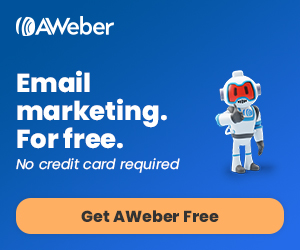Email Marketing
Communication is widely recognized as a fundamental aspect of human
existence. Establishing connections with others serves as a means of
conveying information and fulfilling a basic human need. Email, as a
versatile tool, is employed for a multitude of purposes, including
communication with friends, users, information requests, and job
applications.
Email, as a method of business communication, holds significant value due
to its speed, affordability, accessibility, and ease of replication.
Companies often develop email marketing campaigns to attract new
customers, encourage repeat purchases from existing customers, foster
customer loyalty, and inform or remind them of special offers or events.
The effectiveness of an email marketing campaign relies heavily on
garnering substantial responses from the intended target audience.
Acquiring knowledge of email marketing tools, techniques, and terminology
is relatively straightforward, enabling the initiation of an effective
email marketing strategy for one's business.
Therefore, this article will delve into the definition of email
marketing, its operational mechanisms, the significance of email marketing
in business growth, the selection of email marketing service for a
successful start in this endeavor.
1. What is Email Marketing?
Electronic mail, commonly known as "email," is a mode of communication that utilizes electronic devices to transmit messages over computer networks. The term "email" encompasses both the delivery system and the messages sent and received.
Email Marketing is a form of direct and digital marketing that employs email to promote a business's products or services. Various email marketing techniques can play a crucial role in a company's marketing strategy by engaging customers between purchases, building brand awareness, and fostering relationships.
In essence, email marketing is the process of utilizing email as a sales channel. To accomplish this, a substantial email address list (database) of individuals who have voluntarily subscribed to receive messages is necessary.
Email marketing has its own terminology, which may appear perplexing. To assist in planning an email marketing strategy, we have included a straightforward email marketing glossary below.
Automation: A series of pre-written emails for subscriber actions, such as abandoned cart automation; also known as an email sequence or auto-responder.
Broadcast: A one-time message that is sent to groups or classes on a list; also known as newsletters, advertisements, or promotions.
Group: A collection of subscribers on a list organized by brand or business.
List: A compilation of email subscribers; the list may contain multiple groups or classes.
Landing Page: A dedicated page with a login form that individuals can use to opt-in to an email list
Opt-in (verb): The act of choosing to receive marketing emails from a person, brand, or business.
Opt-in (noun): The process of encouraging people to subscribe to a list; also known as a lead magnet.
Opt-in form: A registration form where visitors can join an email list; opt-in forms can be popups, inline, full screen, slider, floating, and more.
Segment: Categories of subscribers that are automatically created based on their subscription activity, such as time zone, engagement rate, purchase history, and more.
Subscriber: Anyone who has registered or opted-in to receive email from a business.
2. Why is email marketing important?
The significance of email marketing lies in its ability to provide businesses with direct access to their audience, eliminating the need to rely on external platforms for message dissemination. The following points outline the reasons for its importance:
Accessibility: Email simplifies the management and tracking of personal and business messages for small businesses. By incorporating a newsletter subscription option on their website, businesses can steadily grow their audience and reach out to them through newsletters. Additionally, customers can be directed to the newsletter via social media profiles.
Affordability: Email marketing offers two major advantages - cost-effectiveness and simplicity. Compared to other marketing methods, email is a cost-efficient means of promoting a company, product, or service. Regular mailings serve as an easy and effective way to provide updates on company news, upcoming events, and special offers. Email software facilitates the scheduling of automatic promotional emails for recently engaged customers.
Personalization: Email marketing enables businesses to target specific customers or individuals. For instance, offering customers an exclusive annual discount on a product or service can be a personalized approach. Personalization fosters strong customer relationships, leading to increased sales and customer loyalty.
Measurability: A significant benefit of email marketing is the ability to measure its impact with precision. This is crucial, as improvement is impossible without accurate measurement. Through an email campaign, businesses can determine the number of email opens, link clicks, and purchases made as a result of email engagement. This data allows for campaign adjustments and facilitates one-on-one conversations with users.
Scalability: Email marketing offers scalability, allowing businesses to send emails to a large number of recipients at a relatively low cost compared to other marketing channels.
3. How Does Email Marketing Work?
Understanding the mechanics of email marketing is a crucial first step
in developing effective email marketing campaigns. While the process
itself is relatively straightforward, it requires extensive research to
determine the most effective means of communicating with subscribers in
a manner that aligns with both their preferences and your business
objectives. The following provides an overview of the fundamental
workings of email marketing:
Selecting an Email Service Provider
The initial step involves identifying an email service provider (ESP) capable of managing and distributing email campaigns to subscribers. ESPs are software applications designed to facilitate the delivery and management of email marketing campaigns. It is important to note that Internet Service Providers (ISPs) such as Gmail, Outlook, and Yahoo are intended for personal use and are not suitable for bulk email distribution. Emails sent from ISPs are often flagged by spam filters and may be deactivated due to suspicious activity. Companies utilize ESPs to send marketing emails, as these platforms possess the necessary infrastructure to ensure optimal email delivery and inbox placement.
ESPs are also referred to as email marketing platforms, email marketing tools, email marketing services, or email marketing software. If an email marketing platform is selected, it is necessary to compile an email list. Please visit this link to explore the factors that must be taken into account when selecting an email service provider.
Develop and expand your email database
The fundamental principle at hand is that the execution of email
marketing campaigns is contingent upon the presence of recipients.
Additionally, it is crucial to acknowledge that the effectiveness of
email marketing hinges on the inclusion of the appropriate individuals
within your database. This database should consist of email addresses
belonging to subscribers who have willingly consented to receiving email
communications from your organization.
Most Email Service Providers (ESPs) offer the capability to generate a subscription form that can be integrated into your website. It is imperative that every individual on your email list has explicitly granted permission to be included. Consent is obtained when a customer agrees to receive emails from your organization by providing their email address on your blog, website, landing page, social media platforms, or any other relevant channels. In email terminology, this agreement is commonly referred to as 'opting-in'.

Craft a welcome email for new subscribers
When an individual signs up for your email list, it signifies their
interest and attention. This presents an opportune moment to further
engage them through the means of a welcome email. A welcome email is
an automated message that is dispatched to new customers and
subscribers. The objective is to promote content that solidifies your
brand identity and establishes a relationship with the subscriber.
This can include a welcome offer, links to recent articles, important
information, and other relevant materials. Furthermore, it is crucial
to encourage subscribers to add their organization's email address to
their contact list to ensure that they do not miss any future
communications.
Establish your email marketing objectives
Now that you have commenced the process of building your email
database, it is essential to contemplate the desired outcomes of your
email marketing campaign. Every email marketing endeavor should possess
a clearly defined objective. This may encompass introducing new
products, fostering loyalty with existing customers through exclusive
offers, disseminating important company updates, or any other purpose
that aligns with your organizational goals. By establishing a clear
objective, the creation of email content becomes a more streamlined and
efficient process.
Please write your email copy with careful consideration of the
following guidelines. It is crucial to establish a strong foundation by
presenting topics that are both interesting and relevant to your target
audience. Additionally, it is important to maintain a consistent tone
and voice throughout your email.
To achieve this, please follow these tips for crafting persuasive and engaging email copy:
- Imagine that you are writing a letter to someone.
- Clearly display your brand name.
- Share your story to establish a personal connection.
- Begin with the suggested topics below to pique curiosity.
- Use your natural speaking voice when writing, as if you were having a conversation.
- Break the text into short paragraphs and utilize bullet points whenever possible.
- Ensure that email signatures include a real person's name.
- Don't worry if you have limited experience in copywriting.
- Writing effective emails is a skill that can be honed with practice and time.
-
Typo
- Forgotten or incorrect links
- Text formatting errors
Have team members’ review and verify the test email on both desktop
and mobile devices. Utilize the email preview feature to test
different screen sizes and email clients. Once complete, double-check
that you have selected the correct email list.
Schedule your campaigns at optimal times
It is important to be strategic about the days and times when you send your emails. Most individuals tend to check their inbox multiple times throughout the day. Select a time that aligns with your audience's habits and preferences.
While many people check their email upon arriving at work in the
morning and afternoon, it is essential to test different times to
determine the most effective slots for your specific audience.
Some email marketing tools offer a Send Time Optimization feature, which selects the best time for each interaction based on past interaction data. If available, consider utilizing this feature to maximize the impact of your emails.
Some of the Popular email marketing tools in 2023
ActiveCampaign – Best for small to medium-sized businesses HubSpot – Best for B2B service companies ClickFunnels – Best for coaches, consultants, and online courses Benchmark – Best for small agencies GetResponse – Best for teams on a tight budget
AWeber-- Best for Small Businesses
Moosend-- Best for Streamlined Email Marketing
In conclusion, you should spend time developing blog content, creating online courses, and engaging with your audience on social media. But we should not ignore the email. For one thing, users now spend more time on mobile devices than on desktop computers. As emails are optimized for mobile, they create great content. Additionally, email offers flexibility and endless customization options. Start creating your email marketing templates and other assets today. Use it to promote your next product or service, build demand for your products, and better connect with your target market. With this information, you can start generating ROI immediately.
Related Topics
- Top email marketing tools in 2023
- How to choose an email marketing Service Provider?
- What is Affiliate Marketing?





0 Comments